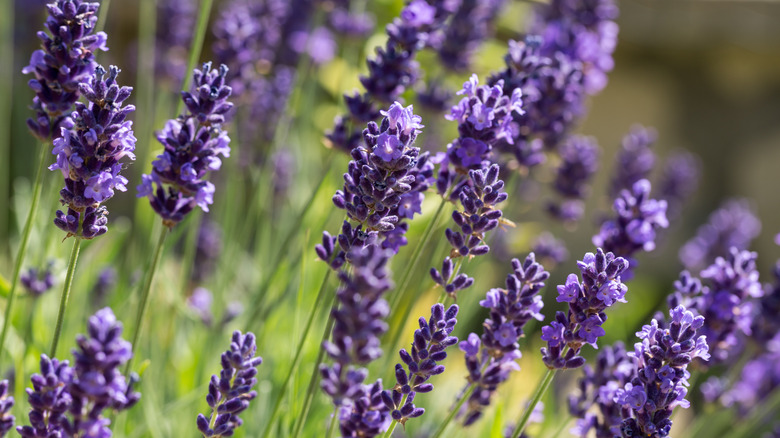Our Expert Horticulturalist Tells Us The Popular Garden Herb You Should Be Growing With Lavender
Lavender (Lavandula spp.) is an aromatic, bushy shrub native to the Mediterranean. Belonging to the Lamiaceae family, this perennial has gray-green, needle-like foliage and spikes of small, tubular, highly fragrant flowers in shades of purple, blue, pink, and white. Lavender flowers attract a range of beneficial insects to the garden, which can act as natural predators to many common pests — so it's no wonder lavender is a valuable addition to numerous companion plant pairings. Common parsley (Petroselinum crispum) is one plant that you should be growing with lavender to reap the benefits of this natural pest-repellent.
Parsley is an herbaceous, hardy biennial in the Apiaceae family. This pungent culinary herb has vibrant green, deeply divided leaves that grow in rosettes. In its second growing season, parsley produces umbels of green to yellow flowers. Although a parsley plant typically completes its life cycle in two years, it is more commonly grown as an annual, harvested for its flavorful leaves in the first year.
Why should you grow parsley with lavender?
Parsley is a relatively easy-to-grow garden herb that needs little attention once established. However, it can be susceptible to several common pests including aphids. Aphids are small, sap-sucking insects that can cause parsley to become yellow, distorted, or stunted. They also produce a sticky substance called honeydew that can attract sooty mold. Many pesticides do not allow application on edible crops, so it is necessary to consider other means of preventing infestations on your parsley. Introducing natural predators for aphids is an effective, environmentally friendly method for controlling this pest, whilst keeping your garden's ecosystem in balance. Lavender flowers attract ladybugs, lacewings, and hoverflies, among numerous other pollinators. Adult ladybugs can eat 50 aphids a day while hoverflies and lacewings are predaceous during their larval stage.
The presence of different plant species together, particularly those that are aromatic, can also disrupt pests as they search for their hosts. Many plant-feeding pests, such as aphids, rely on scent to locate their host plants, being easily disoriented by the strong smell of lavender flowers. While parsley also repels certain pests, such as asparagus beetle, these are not a problem for lavender plants — in fact, lavender tends to be trouble-free. Alongside the pest-controlling benefits, parsley and lavender make an attractive pairing in the garden. The large, vividly green parsley leaves contrast well with the silvery and purplish lavender plant hues.
Planting parsley and lavender
Parsley grows best from seed. After the last frost has passed, sow the seeds directly in the planting site, cover with a light layer of soil, and maintain moisture. Parsley seeds should germinate within two to five weeks — once the seedlings are large enough to handle, they can be thinned to a final spacing of 10 to 12 inches. Although germinating lavender seeds is possible, lavender plants are more commonly started from cuttings. Take cuttings from the mother plant in the summer and plant in moist, sandy soil under a cold frame. The rooted cuttings can be planted out after one year.
Both lavender and parsley grow best in full sun, with parsley being tolerant of partial shade. Both plants thrive in well-drained soil; however, lavender prefers nutrient-poor, sandy or gravelly soil with minimal moisture retention, while parsley prefers rich, moist soil. In sandy soils, incorporate organic matter, such as compost, into the parsley planting site. In richer soils, add compost as well as sand, perlite, or gravel to the bed before planting lavender. When growing these plants alongside one another, consider that lavender prefers to dry out in between waterings whereas parsley prefers consistent moisture — spot water parsley at the base of the plant to avoid saturating lavender roots. Alternatively, grow parsley in containers alongside lavender plants.


